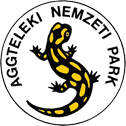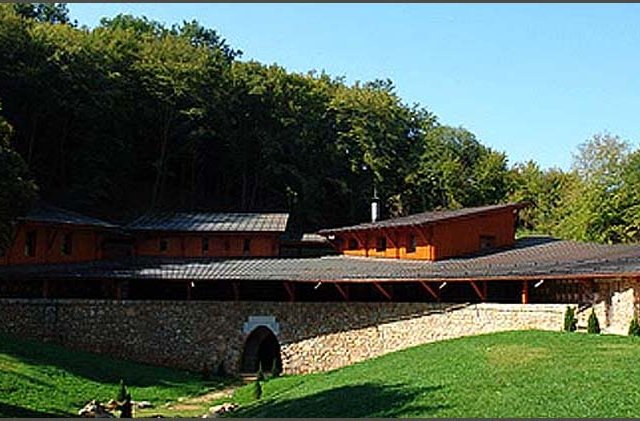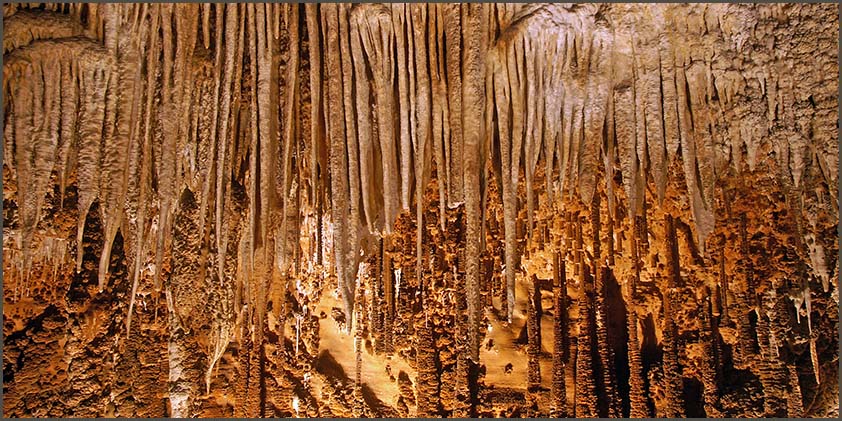
The Rákóczi Cave
The majorit y of the Esztramos Hill area consists of blocks of Triassic limestone, but above the Bódva River (northern shore) one also encounters Triassic dolomite. Over time, the fracture zones in these areas were tunnelled and mined for ore, resulting in the discovery of stunningly ornamented natural cavities. One of these is the Rákóczi Cave, inside which iron (limonite) veins are still visible in some areas today.
y of the Esztramos Hill area consists of blocks of Triassic limestone, but above the Bódva River (northern shore) one also encounters Triassic dolomite. Over time, the fracture zones in these areas were tunnelled and mined for ore, resulting in the discovery of stunningly ornamented natural cavities. One of these is the Rákóczi Cave, inside which iron (limonite) veins are still visible in some areas today.
Discovery and Exploration
Along the side of the Esztramos Quarry workshop building, a dual entrance (Lagos and Trammer) tunnel leads 160 m into the hill and opens into the Rákóczi Cave. The miners initially planned to fill the deep pit with mine tailings, but after many tons of material was disposed of here, they abandoned the plan. The first traversal of the cave in 1958. Exploration of additional routes was carried out in 1964 by Gyula Szilvássy and two other members of the Customs Officers Cave Research Group.
In 1968, divers in the first lake reached a depth of 11m, but further exploration was blocked by mining tailings and waste. Skin divers from the FTSK Dolphin Group successfully approached and entered the siphon near the surface on the southern wall of the second lake. This so-called "Red Sea" air passage extends for 40 m and its dry walls are covered with antler- or coral-like formations. Amphora KSC divers in 1972, and again later in 1976 reached depths of 32 m at both the south-west and south-east sides of the lake.
From 1978, and for several years after, the director of the Rudabánya Ore Mining and Mineral Museum for some reason prohibited members of the Dolphin Group from entering and exploring the cave system further.
The first phase of underwater exploration was completed in 1984. Thanks mainly to the efforts of Sándor Kalinovits, László Maróthy and Attila Kollár, long sections of the system were investigated. Divers searched 300 m in and to a depth of 44 m.
Led by Zoltán Szabó, efforts were renewed in 1998 by the István Plózer Cave Research Department. Work carried out on behalf of the Speleological Institute resulted in the final mapping of the entire Rákóczi Cave system (350 m long, 44m deep).
Formation of the Cave
The 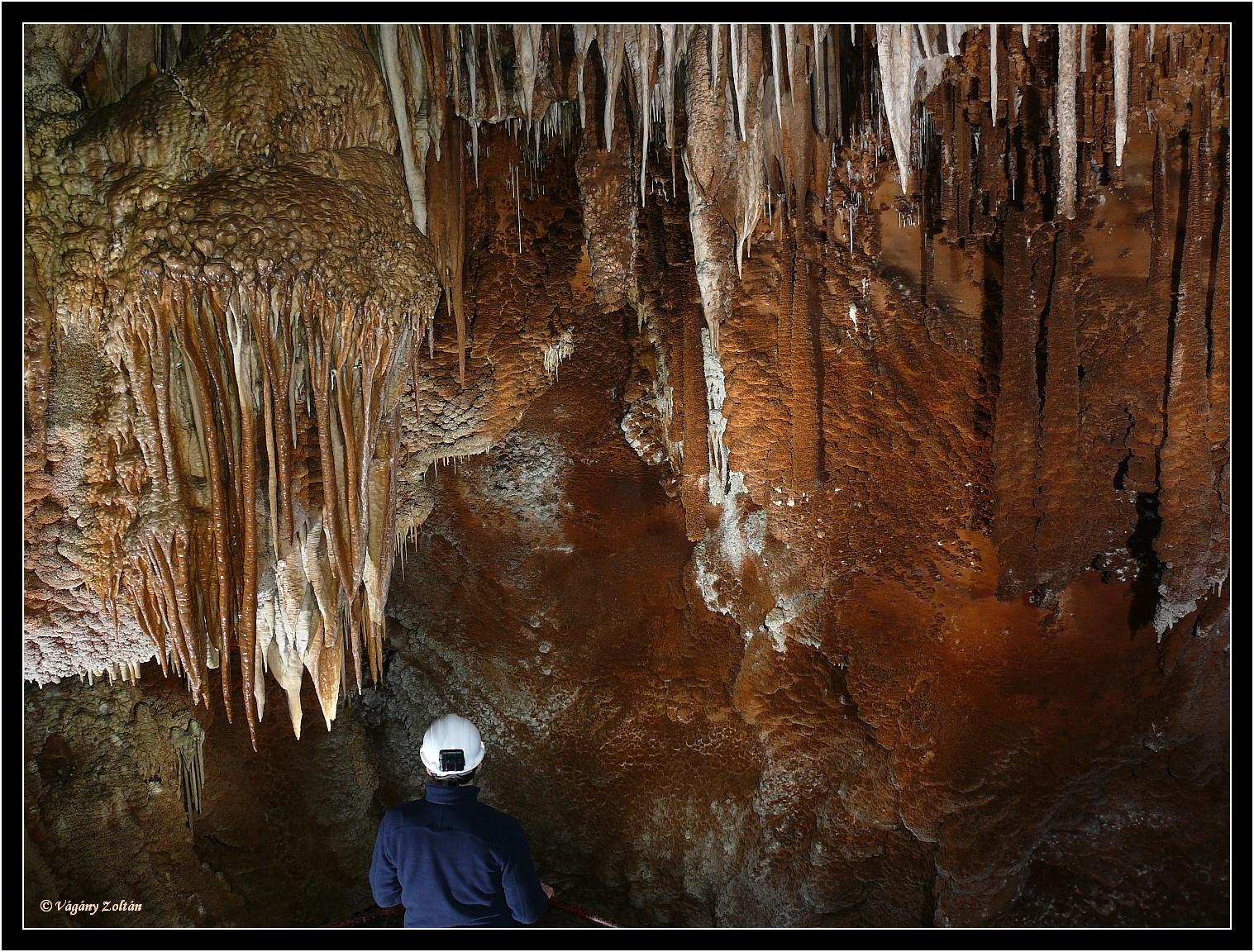 cave was mostly formed in Middle-Triassic Limestone (the Steinalm Limestone Formation), and was created by the erosive effects of water, as were the cavities below water level. The water levels of the lakes in the cave is level with the Bódva River. Varying water levels are indicated by the different calcite formations (for example carnation-calcite). We know that the average depth of the lakes is 10-30 m, with periods of greater water levels.
cave was mostly formed in Middle-Triassic Limestone (the Steinalm Limestone Formation), and was created by the erosive effects of water, as were the cavities below water level. The water levels of the lakes in the cave is level with the Bódva River. Varying water levels are indicated by the different calcite formations (for example carnation-calcite). We know that the average depth of the lakes is 10-30 m, with periods of greater water levels.
Due to the small footprint of the Esztramos Hill, the lack of significant water flows prevented the scattered small and large cavities from merging into a coherent system.
Connected by a fissure, the Rákóczi Cave contains two very large chambers. Below water level, but at the top of the towering halls, one finds sphere-shaped formations made by water dissolving those areas. Ironically, these same formations are being ruined by precipitates resulting from condensation.
Geologic Formations
The majority of th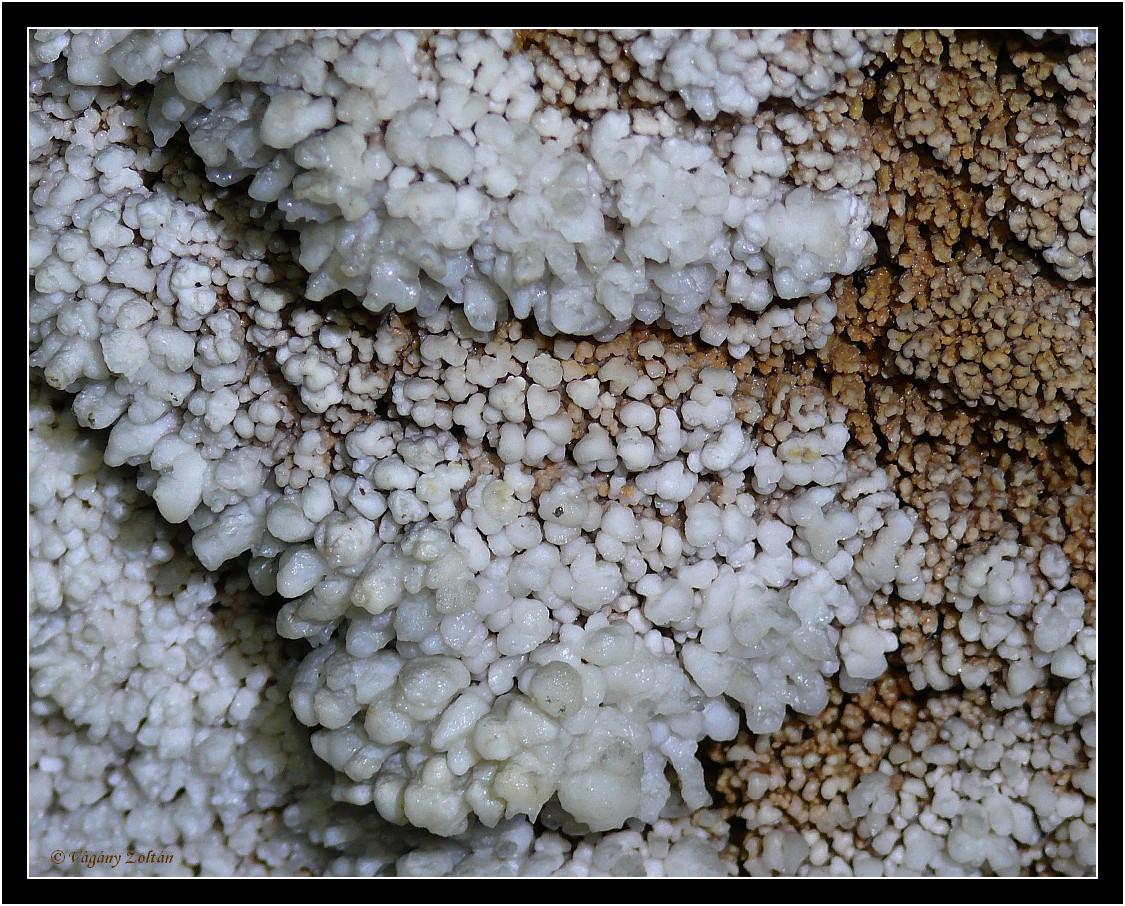 e cave sections dripping rain water can be detected. At some places the speleothems are strongly worn away because the chemical composition of water has changed (the mountain was been decapitated by mining operations). The exuberant stalactites are evidence of the great amounts of water seeping into the system, while the consecutive sequences of pea-stones is evidence of the several Pleistocene climate fluctuations as well as air movement inside the cave. The Rákóczi Cave’s opulent and diverse offering of precipitated calcite forms is marked by several meter long stalactites and large areas of pea-stones.
e cave sections dripping rain water can be detected. At some places the speleothems are strongly worn away because the chemical composition of water has changed (the mountain was been decapitated by mining operations). The exuberant stalactites are evidence of the great amounts of water seeping into the system, while the consecutive sequences of pea-stones is evidence of the several Pleistocene climate fluctuations as well as air movement inside the cave. The Rákóczi Cave’s opulent and diverse offering of precipitated calcite forms is marked by several meter long stalactites and large areas of pea-stones.
Due to the rare double lakes, stalagmites could only grow in a few places. Among them we can mention an interesting group shaped like a small locomotive growing on the side of a fallen stalactite. The section named The Jewellery Box is characterised by draperies, huge bushes of helcitites, and one 10 cm formation resembling a trident. The pea-stones resulted from precipitating thermal waters. We now know that most types of pea stones were produced through the total evaporation of seeping waters. Presumably, the colder, drier climate also had a hand in this. Caves in other parts of the country feature walls covered with 2-5 mm (5-13/64 inch) thick pea-stones, and several centimetre long rod-like formations. The Rákóczi Cave also exhibits unique, several millimetre thick calcite compositions as the consequence of the stagnant lake environment.
As the cave walls dried, smaller clusters of carnation-calcite crystals and protruding needle-like crystals grew over the earlier pea-stones. Undamaged examples can be viewed from the walkway high above the substrate. Thanks to the multiple alternating floods and waning water levels, a rare manifestation of 1-1.5 cm (half inch)ribs can be seen at several places along the walls. Besides the variety and abundance of speleothems, their rich colour variations are also attention grabbing. It is very unusual for dripstones and pea-stones to develop over each other, making this a very special and spectacular sight.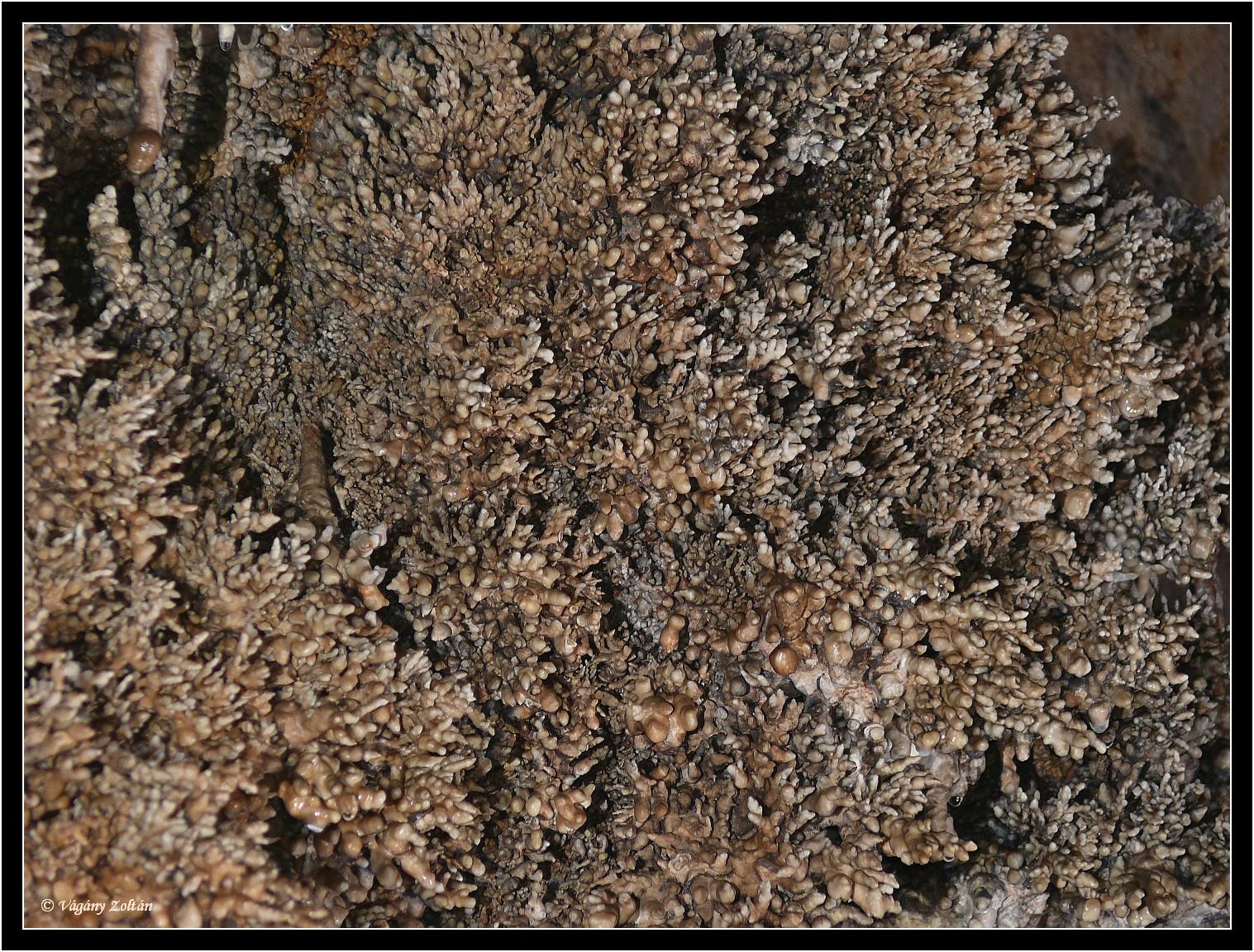
The basic dark-grey coloured stone is split up by black streaks. Popcorns and straws shine bright white against the darker brown and red dripstone background. These colours are reflected in the deep, green still-waters. Currently, there is no accepted explanation for the reddish-brown dripstones hanging down from the ceiling above the second lake, nor for the nearby red and snow-white cave formations in this section.
The unequalled majesty of these speleothems has inevitably suffered to some degree over the years from frequent visitors to the cave, exploration work, and of course mineral collectors. In the interest of protecting the encrusted walls, the directorate of Aggtelek National Park installed iron ladders and bridges, as well as a lighting system in 1992.
Route
Visitors will encounter two closed-off passages where debris thrown by the mine has made them impassable. Access is made via a strong iron staircase fitted along the sloping wall that leads to a vantage point and rest area above the first lake. The walls here are completely covered with an amazing coat of pea-stones and dripstones. A few steps further along a foot bridge, one sees Lake One to the right, and a few metres later the colourfully pea-stone and stalactite encrusted “Ice Cream Counter.” Going along to the right, one sees groups of needle adorned pea-stones. Following the steep, narrow stairs upwards, there are rod-like pea-stones and pin cushions dangling from white, straw-like stalactites. Along to the left, large, round pea-stones and branchy carnation-calcites sheathing the wall. Coming up to the former site of the “Golden Bird Cage,” only broken stalactites remain. Here dripstones, pea-stones and thick white stalactites grew. After a short flight of stairs, one approaches a terrace above the second lake, and perhaps the most spectacular sight in the cave where massive reddish-brown stalactites hang from the ceiling. Following the winding staircase further leads to a vertical ladder leading to the surface.
The Rákóczi Cave came under strict protection in 1982. No special clothing is necessary, but a flashlight is required.
(ANPI archive, Viktor Virók)
